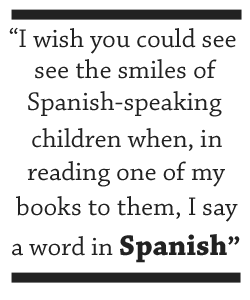
![]() Katherine Ali is a dual-certified elementary and special education teacher. She recently graduated as a literacy specialist with a Masters in Science from Manhattanville College. She has experience teaching internationally in northern China and now teaches in the Bronx, NY.
Katherine Ali is a dual-certified elementary and special education teacher. She recently graduated as a literacy specialist with a Masters in Science from Manhattanville College. She has experience teaching internationally in northern China and now teaches in the Bronx, NY.
There is a natural interplay of reading, writing, speaking and listening in the modern day elementary classroom. Morning meetings, read-alouds, and group projects foster an integrated model of literacy with a special focus on speaking and listening. Appendix A of the Common Core State Standards (CCSS) states that “oral language development precedes and is the foundation for written language development; in other words, oral language is primary and written language builds on it.”
After students have begun reading and writing, speaking and listening still have an integral place in the classroom – so much that the CCSS set specific standards for speaking and listening to promote a balanced approach to literacy: “The speaking and listening standards require students to develop a range of broadly useful oral communication and interpersonal skills…students must learn to work together, express and listen carefully to ideas, and integrate information.” The speaking and listening standards expect students to participate in “rich, structured conversations” in which they are building on the ideas of others and speaking in complete sentences. Teachers need to create models and routines for deliberate and intentional dialogue that builds bridges to the students’ reading and writing. In that way, students have the opportunity to also recognize the organic intertwining of these modes of receptive and expressive language.










